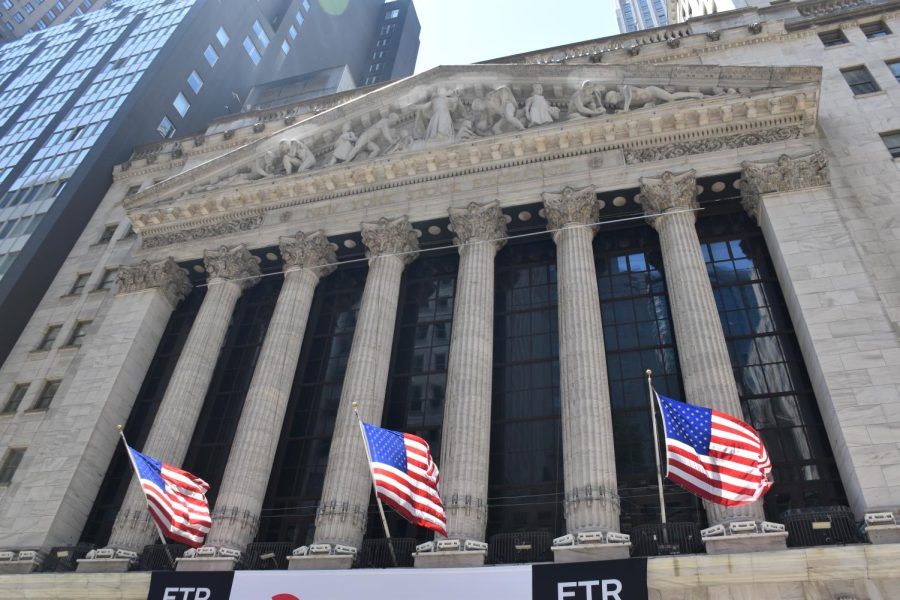Amid recession fears, the Federal Reserve paves path for economy
July 3, 2022
As talks of a recession intensify among corporate leaders and economists, the Federal Reserve announced a new and more aggressive interest rate hike following its June 15 meeting.
The Fed continued its trend of setting records by raising interest rates by 75 basis points, its largest increase since 1994. This resulted in short-term rates pegged at 1.5%-1.75%.
May’s inflation data seemed to be the deciding factor between choosing the 50 or 75 basis point hike. The consumer price index came in at 8.6% in May, recording the fastest increase since 1981. Additionally, there was a substantial rise in consumers’ inflation data, signaling to the Fed that tighter measures should be exercised.
Russia’s invasion of Ukraine and China’s COVID-19 lockdowns persist in imposing a great threat to the supply chain, adding another reason for the Fed to go through with tighter measures.
More unfortunate news is just around the corner as the Fed starts its qualitative tightening.
Extreme measures are being taken by the Fed as it plans to shrink its balance sheet after it rose to $9 trillion, the product of mortgage-backed securities purchases and Treasuries.
The 30-year fixed mortgage rate rose to 5%, which is the highest since the 2008 financial crisis.
It is difficult to detect growth in the economy when inflation continues to be high, which continues to trend upward due to supply chain issues, supply and demand imbalances, high energy prices and pandemic-related consequences.
The high interest raise did not seem to come as a surprise to the market. The S&P 500 rose 1.5%, and the Nasdaq, Inc.composite rose 2.5% on June 15.
This economy is currently in what economists refer to as stagnation, in which policy tightening occurs alongside economic growth.
Restoring price stability is the primary focus, even if it comes at the cost of a mild recession or higher prices. This comes at the cost of consumers, and workers’ pay is not equating to the rise in prices. Average hourly earnings, when adjusted for inflation, have fallen 3% over the past year.
This has been the Fed’s biggest effort to tame inflation, and it led to experts cutting their official 2022 economic outlook gains and anticipating only 1.7% in gains in the gross domestic product.
With all of this tightening, it is very likely the current stagnation will shift into a recession. Expectations for job gains have been robust in recent months, and the unemployment rate has remained low.
Peter Boockvar, chief investment officer at Bleakley Advisory Group, expects that in the four remaining Fed meetings,the hikes will add up to 175 basis points.
The tip into recession seems inevitable, especially after the Fed’s balance sheet tightening, adding on to the high interest rate hike. Many experts share the same sentiments that the increase was extreme and further pushes away the idea of soft landing.
“He hit it hard that ‘we want to get inflation down’ but also hit hard that we want a soft landing,” Robert Tipp, the chief investment strategist at PGIM Fixed Income, told the Associated Press.
Soaring inflation has weakened President Joe Biden’s approval rating heading into the midterm elections.
In the face of slow economic growth, the Fed’s desired inflation rate of 2% can only be reached with a higher unemployment rate.
In a press release, the Fed Open Market Committee said that it “expects inflation to return to its 2% objective and the labor market to remain strong.”
Yet, even with higher interest rate hikes, the Fed illustrated bright outlooks for the economy as it has made strong commitments to tackling inflation.
Powell also hinted at what lies ahead, forecasting that June’s hikes will not be “common.”
It is hard to see the impact of fiscal policy on inflation data as it takes time, so it is likely that in the Fed will announce similar hikes in the coming months.









